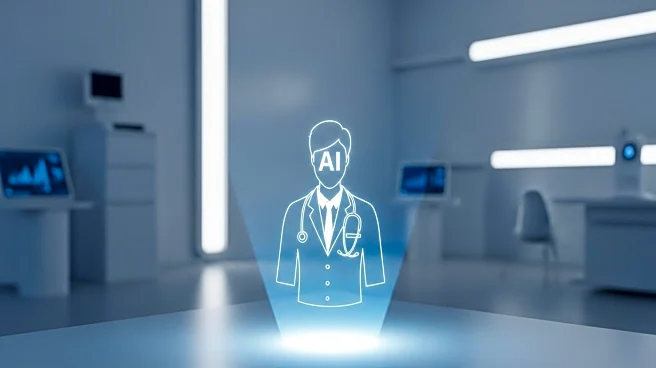What's Happening?
A report by PwC suggests that AI-driven, digital-first healthcare models could capture $1 trillion in annual healthcare spending by 2035. The report highlights a shift towards consumer-centric healthcare services that leverage artificial intelligence to simplify care models, reduce costs, and improve care quality. The U.S. healthcare system, currently facing rising costs and a projected shortfall of doctors, is expected to undergo significant changes. These include the decentralization of care, increased use of AI for personalized treatment, and the emergence of new revenue models. The report emphasizes the need for healthcare leaders to invest in next-generation models and technologies to address these challenges.
Why It's Important?
The potential shift towards AI-driven healthcare models represents a transformative change in how healthcare is delivered and experienced in the U.S. This transition could lead to more efficient and cost-effective care, addressing issues such as clinician burnout and fragmented care. The adoption of AI and digital technologies could also enhance patient outcomes by enabling earlier interventions and personalized treatments. As the healthcare industry adapts to these changes, stakeholders including payers, providers, and tech companies stand to gain a competitive advantage by leading this trend. However, this shift will require significant investment and a rethinking of traditional healthcare delivery models.
What's Next?
Healthcare organizations are expected to invest in AI and digital technologies to stay competitive. This includes developing unified platforms for triage, diagnostics, and reimbursement, as well as integrating AI into clinical workflows. The industry may also see increased collaboration between traditional healthcare providers and tech companies to drive innovation. As these changes unfold, regulatory frameworks will need to adapt to ensure patient safety and data privacy. The success of this transition will depend on the ability of healthcare leaders to embrace disruption and leverage new technologies to improve care delivery.










